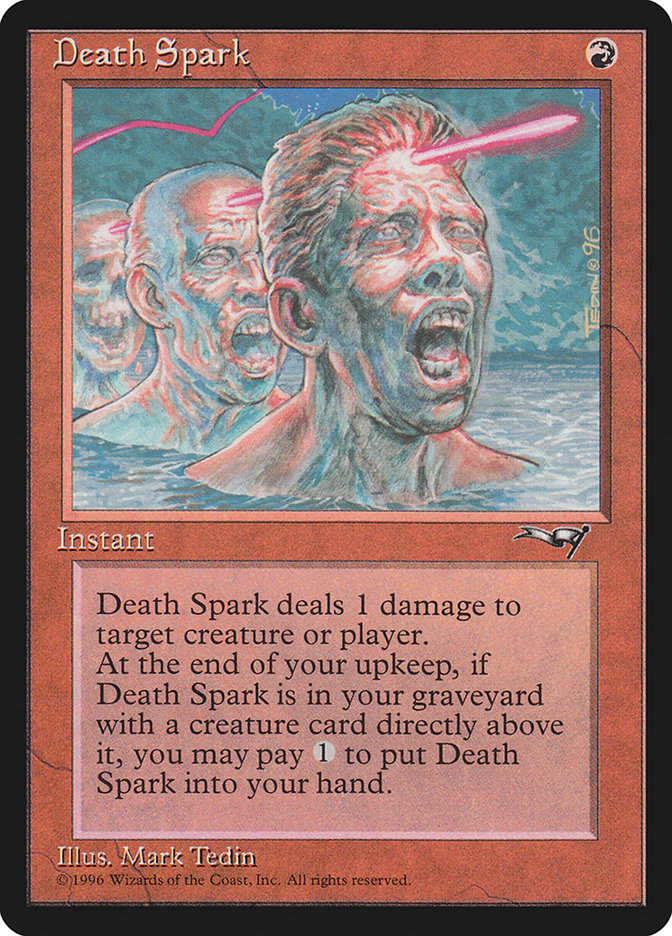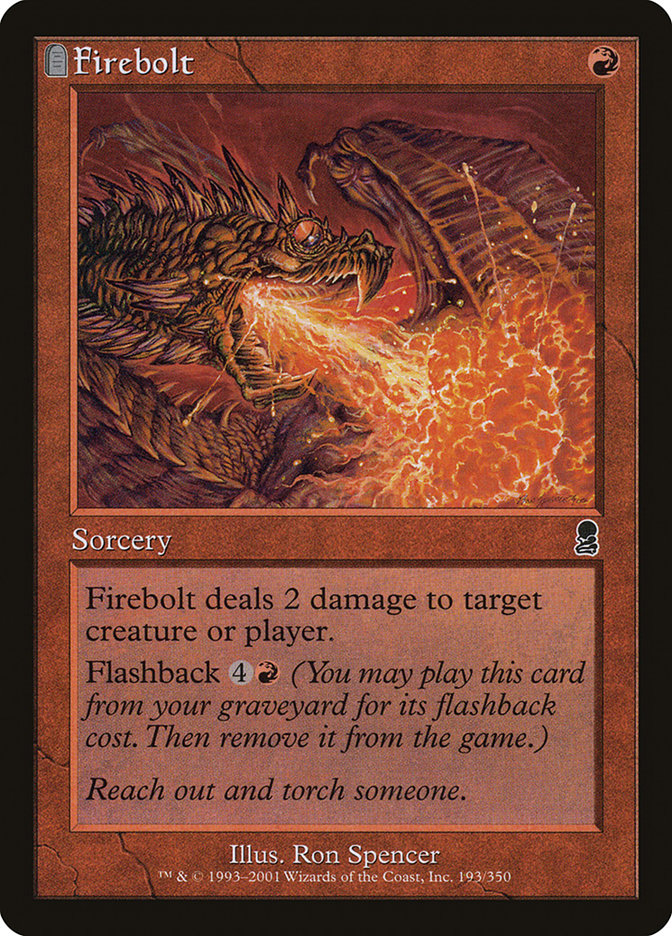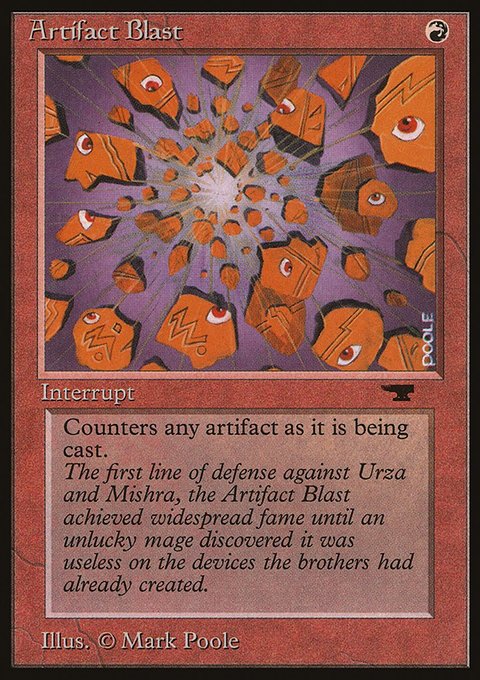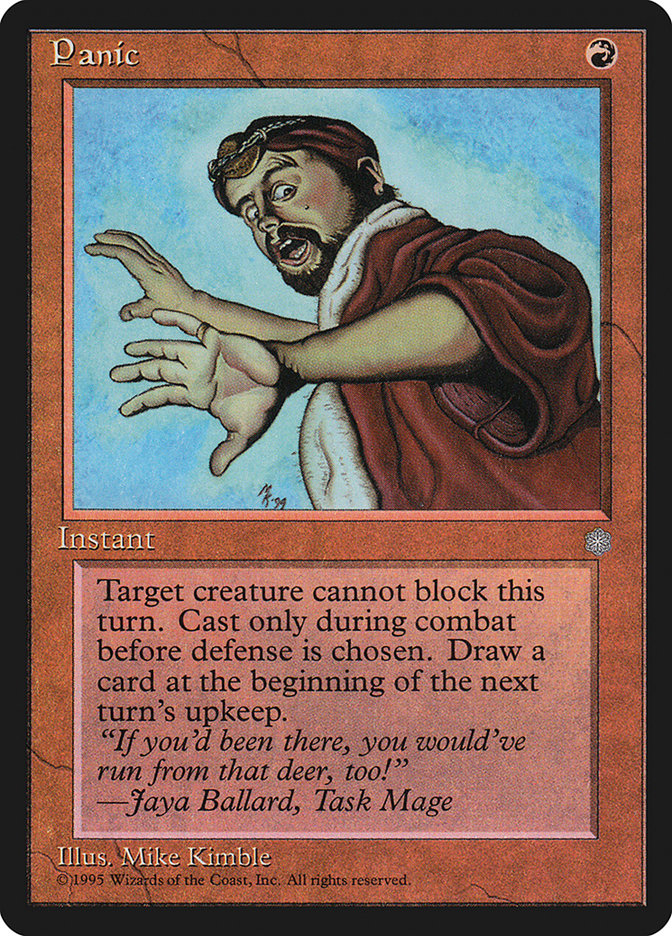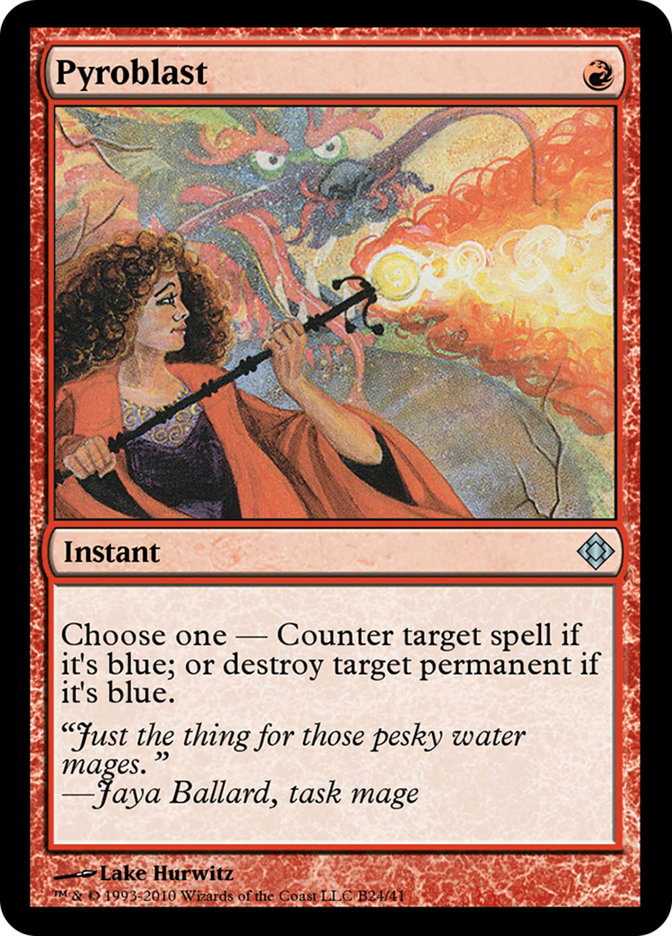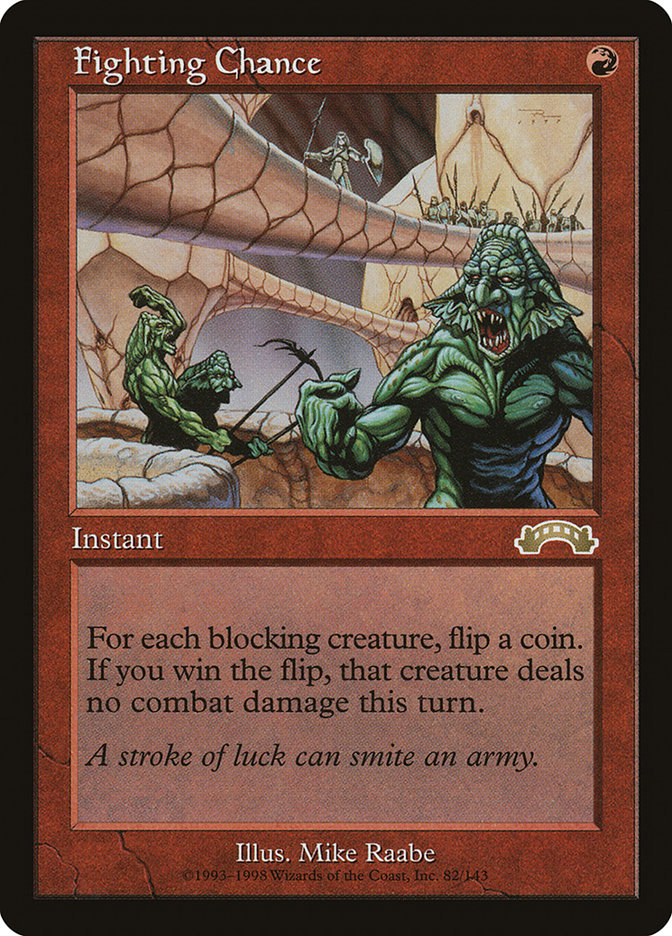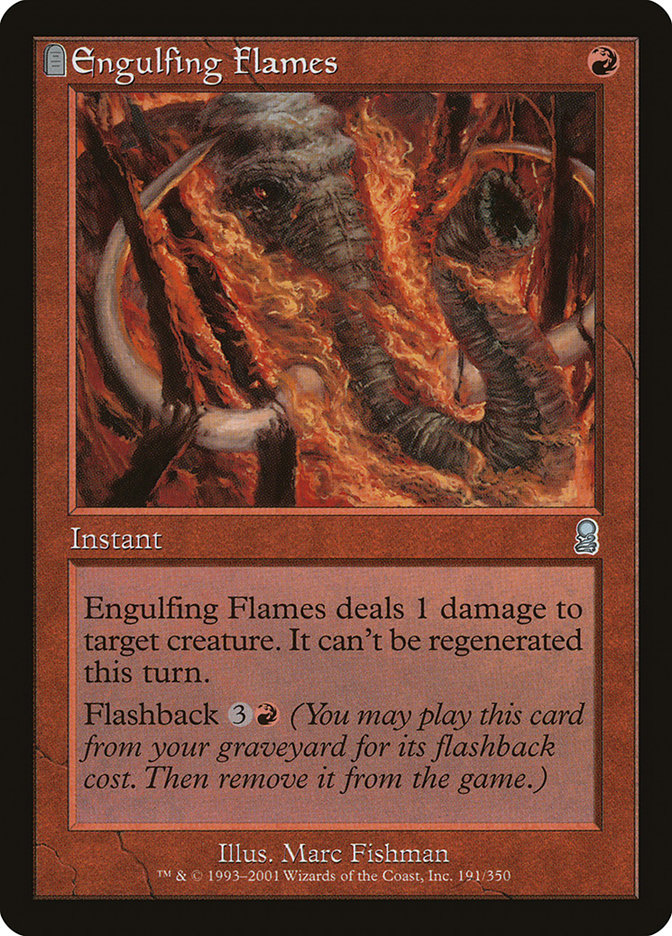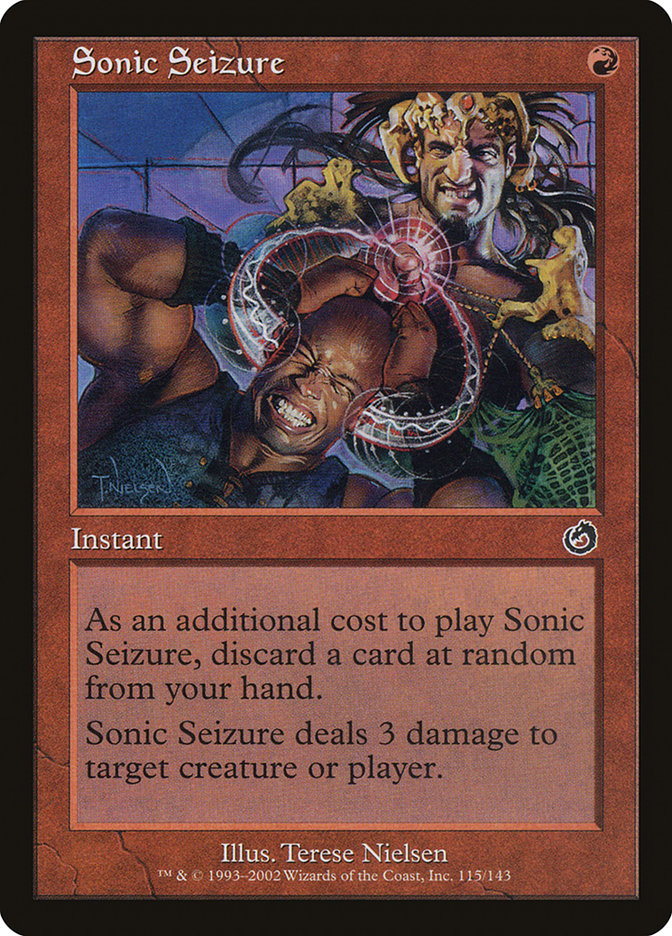Death Spark MTG Card
| Card sets | Released in 4 setsSee all |
| Mana cost | |
| Converted mana cost | 1 |
| Rarity | Uncommon |
| Type | Instant |
Text of card
Death Spark deals 1 damage to target creature or player. At the end of your upkeep, if Death Spark is in your graveyard with a creature card directly above it, you may pay o1 to put Death Spark into your hand.
Cards like Death Spark
Death Spark is a unique inclusion to the red spells repertoire in Magic: The Gathering. This card bears resemblance to other recurring damage spells like Goblin Bombardment, which provides the ability to repeatedly deal damage. However, Death Spark differs as it allows the damage to come directly from the graveyard, provided you have a creature with lower converted mana cost above it. Goblin Bombardment, in contrast, requires sacrificing a creature as part of its activation cost.
Considering reusability, we can look at cards like Firebolt that also offers a flashback ability, thereby enabling a second use. Yet Firebolt doesn’t have the same potential for ongoing recurrence as Death Spark. Another card that can be compared is Unearth, which allows a creature to be brought back from the graveyard for further usage. Although Unearth influences the battlefield again with a creature, it doesn’t grant the continuous damage dealing Death Spark is capable of.
Ultimately, when evaluating similar cards, Death Spark stands out for its capacity to be a persistent threat throughout the game. With strategic graveyard management, it ensures that players can maintain a steady flow of damage, making it a notable choice for red-deck players in Magic: The Gathering.
Cards similar to Death Spark by color, type and mana cost
Card Pros
Card Advantage: Death Spark offers unique card advantage by potentially recurring itself from the graveyard, ensuring that you have consistent access to direct damage each turn.
Resource Acceleration: While Death Spark itself does not provide traditional mana acceleration, it can be a catalyst for resource acceleration by efficiently removing small creatures that are impeding your board state, allowing you to press the advantage and maintain tempo.
Instant Speed: The advantageous design of Death Spark being an instant allows for flexible play, whether it’s disrupting an opponent’s strategy at a crucial moment or simply preserving it for the perfect timing to maximize its recurring potential.
Card Cons
Discard Requirement: Death Spark’s unique ability, which triggers upon a creature’s death, necessitates a card to be discarded to activate its reusability. This can hinder your hand economy, particularly detrimental when your card pool is dwindling or if you must let go of key components.
Specific Mana Cost: Locked into the red mana spectrum, Death Spark’s utility is naturally confined. Decks without red mana accessibility find this card completely incompatible, making it a less versatile option in the expansive MTG multiverse.
Comparatively High Mana Cost: While the card’s recurring damage effect is appealing, the cumulative upkeep cost can be taxing. When considering your mana reservoir, the upkeep in conjunction with other spells and abilities within your strategy might prove burdensome, overshadowing other more mana-efficient burn options available to players.
Reasons to Include Death Spark in Your Collection
Versatility: Death Spark is a unique instant that holds the ability to deal recurring damage, making it a consistent tool for decks looking to whittle down an opponent’s life total or control small creature populations on the board.
Combo Potential: This card shows immense synergy in decks that manipulate the graveyard, allowing players to bring it back with ease. It’s an excellent match for strategies that emphasize recycling spells or interacting with the top of the graveyard.
Meta-Relevance: In formats where games tend to stretch and every point of damage counts, Death Spark can shine. Its ability to keep coming back provides a continued threat that can be hard for opponents to permanently resolve.
How to Beat Death Spark
Death Spark is a unique card in MTG, known for its ability to recur from the graveyard and deal damage repeatedly. Understanding its mechanics is key to effectively countering it. To handle Death Spark, graveyard interaction is essential, as the card relies on creatures dying to trigger its return. Hence, clearing the graveyard with cards like Relic of Progenitus can disrupt this cycle. Moreover, since Death Spark targets creatures or players, having hexproof or shroud can protect your valuable pieces from being removed.
Cards like Leyline of Sanctity offer such defenses, granting your permanents hexproof and keeping your life total safe from direct damage. Additionally, swift removal spells that can deal with creatures before the end step can prevent Death Spark’s trigger from happening altogether. Maintaining board control and timing your removal or graveyard disruptions right after Death Spark is used, but before the end step, prevents its return for another round of annoyance. With strategic planning and the right countermeasures, this persistent card can be rendered harmless in your matches.
Overall, while Death Spark can be a daunting card to face due to its recurrence, a well-equipped deck with targeted graveyard hate and protective measures can neutralize its impact, allowing players to maintain control of the game.
Where to buy
If you're looking to purchase Death Spark MTG card by a specific set like Alliances and Deckmasters, there are several reliable options to consider. One of the primary sources is your local game store, where you can often find booster packs, individual cards, and preconstructed decks from current and some past sets. They often offer the added benefit of a community where you can trade with other players.
For a broader inventory, particularly of older sets, online marketplaces like TCGPlayer, Card Kingdom and Card Market offer extensive selections and allow you to search for cards from specific sets. Larger e-commerce platforms like eBay and Amazon also have listings from various sellers, which can be a good place to look for sealed product and rare finds.
Additionally, Magic’s official site often has a store locator and retailer lists for finding Wizards of the Coast licensed products. Remember to check for authenticity and the condition of the cards when purchasing, especially from individual sellers on larger marketplaces.
Below is a list of some store websites where you can buy the Death Spark and other MTG cards:
 BUY NOW
BUY NOW BurnMana is an official partner of TCGPlayer
- eBay
- Card Kingdom
- Card Market
- Star City Games
- CoolStuffInc
- MTG Mint Card
- Hareruya
- Troll and Toad
- ABU Games
- Card Hoarder Magic Online
- MTGO Traders Magic Online
See MTG Products
Printings
The Death Spark Magic the Gathering card was released in 4 different sets between 1996-06-10 and 2008-09-22. Illustrated by Mark Tedin.
| # | Released | Name | Code | Symbol | Number | Frame | Layout | Border | Artist |
|---|---|---|---|---|---|---|---|---|---|
| 1 | 1996-06-10 | Alliances | ALL | 70 | 1993 | Normal | Black | Mark Tedin | |
| 2 | 2001-12-01 | Deckmasters | DKM | 11 | 1997 | Normal | White | Mark Tedin | |
| 3 | 2006-07-21 | Coldsnap Theme Decks | CST | 70 | 2003 | Normal | Black | Mark Tedin | |
| 4 | 2008-09-22 | Masters Edition II | ME2 | 123 | 1997 | Normal | Black | Mark Tedin |
Legalities
Magic the Gathering formats where Death Spark has restrictions
| Format | Legality |
|---|---|
| Commander | Legal |
| Legacy | Legal |
| Paupercommander | Legal |
| Oathbreaker | Legal |
| Pauper | Legal |
| Premodern | Legal |
| Vintage | Legal |
| Duel | Legal |
| Predh | Legal |
Rules and information
The reference guide for Magic: The Gathering Death Spark card rulings provides official rulings, any errata issued, as well as a record of all the functional modifications that have occurred.
| Date | Text |
|---|---|
| 2008-10-01 | A card is “directly above” another card in your graveyard if it was put into that graveyard later and there are no cards in between the two. |
| 2008-10-01 | If an effect or rule puts two or more cards into the same graveyard at the same time, the owner of those cards may arrange them in any order. |
| 2008-10-01 | Players may not rearrange the cards in their graveyards. |
| 2008-10-01 | Say you’re the owner of both a permanent and an Aura that’s attached to it. If both the permanent and the Aura are destroyed at the same time (by Akroma’s Vengeance, for example), you decide the order they’re put into your graveyard. If just the enchanted permanent is destroyed, it’s put into your graveyard first. Then, after state-based actions are checked, the Aura (which is no longer attached to anything) is put into your graveyard on top of it. |
| 2008-10-01 | The last thing that happens to a resolving instant or sorcery spell is that it’s put into its owner’s graveyard. Example: You cast Wrath of God. All creatures on the battlefield are destroyed. You arrange all the cards put into your graveyard this way in any order you want. The other players in the game do the same to the cards that are put into their graveyards. Then you put Wrath of God into your graveyard, on top of the other cards. |
